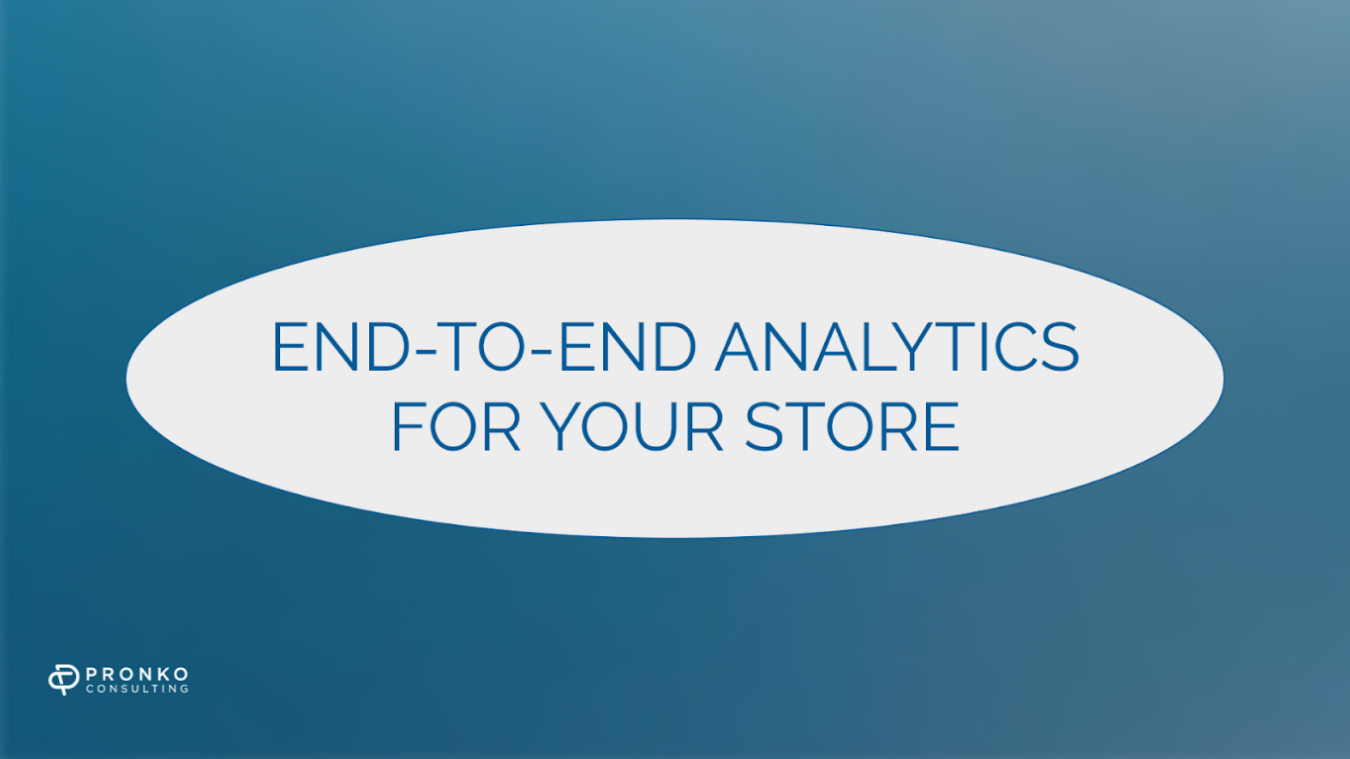What is end-to-end analytics, and how does it work?


What is end-to-end analytics, and how does it work?
End-to-end analytics (SA) is analytics that reproduces the path of an online store customer from a click to a complete conversion. In the article, together with experts, we will talk about what SA is, how it works, what pitfalls exist for its implementation, and when it is effective.
Definition of end-to-end analytics
No matter what terminology you use, end-to-end analytics is an important marketing tool that helps you collect statistics on key indicators. The possibilities of end-to-end analytics are used by commercial companies of almost any profile, including online stores. It is vital for large companies, where there can be many advertising campaigns, and it is challenging to calculate data manually.
Why you need end-to-end analytics
End-to-end analytics helps to identify the most effective advertising channels and collect complete traffic statistics and data linked to specific conversions. This information allows businesses to understand their target audience better, plan advertising campaigns more accurately, achieve complex goals, and calculate marketing metrics.
Google's advertising account allows you to monitor the profitability of campaigns, and call-tracking systems will enable you to take into account phone calls. Still, it would help if you thoroughly understood the effectiveness of specific channels. To evaluate the effectiveness of advertising costs, you need end-to-end analytics that helps you assess the cost of each visitor and application, income from a new client, and advertising budget costs.
End-to-end analytics allows you to determine how effective investments in marketing and advertising are. It is a general data collection system that will show where the most delicious customers come from, which advertising channels and ads work and which do not, and how much money has already been earned.
End-to-end analytics is usually used in the following processes:
Sales Analytics
— Installation of e-commerce, the substitution of numbers.
— Accounting for phone orders and basket numbers.
— Analysis of how much profit each advertising channel brings.
Analytics at the level of customer lifecycles (CLTV)
— Calculate the total value of customers before, during, and after the purchase.
— Reporting to sales (ROI) and marketing reporting on customer life cycles (CLTV).
— Web analytical reporting on behavior, actions, and triggers.
With it, you will receive the following:
In the short term
— Reducing marketing costs / increasing sales by 5-15%.
— Stopping inefficient experiments (some channels do not give results but look effective).
— Reducing the cost of reporting (equals "people time").
Medium-term
— A single system of metrics in the company.
— Continuation of reporting work after the change of people and agencies.
Long term
— Increasing transparency, manageability, and decision-making culture based on data.
— Ability to test hypotheses.
Advantages of end-to-end analytics
We briefly list the main benefits of end-to-end analytics:
End-to-end analytics allows you to generate a general report on all available sales channels, automatically collecting data from all tools. All results are visible in real-time, and each channel can be followed in dynamics.
End-to-end analytics allows you to calculate critical indicators and evaluate advertising revenue and expenses. This way, you can easily understand which advertising campaigns are working effectively and which, on the contrary, only increase the cost of the budget and can be quickly abandoned.
End-to-end analytics helps to reflect the entire sequence of the sales funnels: from the first contact with the audience to the finished deal.
End-to-end analytics allows you to take a comprehensive look at the process of interaction with a client, as it tracks the entire path of the user - from getting to know the company (viewing ads) to an application or purchase. It is a single system with which it is convenient to analyze user behavior and evaluate the effectiveness of advertising.
Critical indicators of end-to-end analytics:
ROI - return on investment, for example, in advertising,
CPL - customer acquisition cost,
LTV - profit from one client,
there are more indicators, and the set depends on the task.
To connect end-to-end analytics, it is essential that:
— the client had simple analytics enabled (for example, in Google Analytics),
— advertising is correctly configured (auto markup),
— there were no gross usability errors on the site (non-working forms, empty pages of goods and services),
— CRM was built into business processes.
At the stage of implementing end-to-end analytics, severe financial investments will be required, but maintaining the system becomes more manageable and cheaper every month. And the results of analytics save money and increase business conversion.
End-to-end analytics tools and services
Call touch
A program for collecting, analyzing, and visualizing data about site visitors with the ability to communicate through a call or message, even with those who have not left any contacts.
Calibri
A service allows you to analyze advertising, increasing the site's effectiveness. Includes call tracking and online chat that collects information from instant messengers and social networks.
ROMI center
A system that automatically transfers information about advertising and sales data to dashboards for other analytics and decision-making based on the results obtained.
There are quite a few end-to-end analytics solutions on the market, and instead of "reinventing the wheel" and doing everything manually, it is better to choose the one that best suits your tasks in terms of feature set. Doing this will gradually optimize your advertising budgets and reduce the time spent on analytics, making your business more profitable than before.
